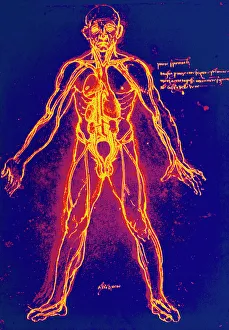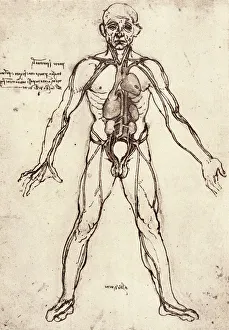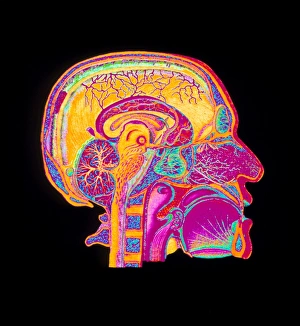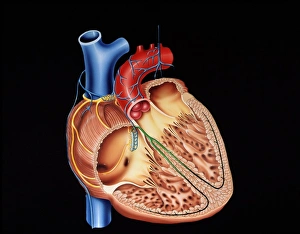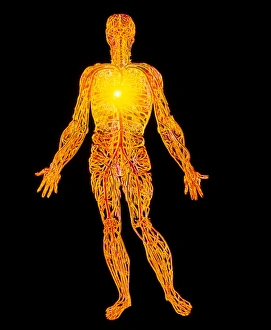Blood System Collection
The intricate network of our blood system has fascinated scientists and artists alike throughout history
All Professionally Made to Order for Quick Shipping
The intricate network of our blood system has fascinated scientists and artists alike throughout history. From Leonardo da Vinci's meticulous drawings of the human venous system to the detailed engravings in "The Anatomy of the Horse, " these depictions have allowed us to understand and appreciate the complexity of this vital system. In Leonardo da Vinci's drawing, we see a visual representation of the human venous system, showcasing its interconnectedness and importance in transporting oxygenated blood throughout our bodies. The Third Anatomical Table from "The Anatomy of the Horse" further emphasizes this interconnectedness, as it depicts the horse's blood vessels with remarkable precision. As we delve deeper into understanding our own blood system, we come across engravings like those found in "The Anatomy of the Horse. " These diagrams provide us with invaluable insights into how different parts of this complex network function together seamlessly. The Fifth Anatomical Table showcases yet another aspect of equine anatomy, shedding light on how their blood vessels are structured. Fast forward to 1863-79 when color lithography was used to depict our very own Blood System. This vibrant artwork captures not only its anatomical intricacies but also highlights its beauty and vitality. Similarly, an engraving from 1857 offers a glimpse into the microscopic world within our veins, revealing haematopoietic stem cells responsible for replenishing our blood supply. However, not all aspects related to our it can beautiful or awe-inspiring. Atherosclerosis is depicted through artwork that reminds us about potential health risks associated with this crucial circulatory pathway. It serves as a reminder that maintaining a healthy lifestyle is essential for keeping our blood flowing smoothly. From ancient times until today, exploring and comprehending the wonders hidden within our veins remains an ongoing pursuit for scientists and artists alike. Through their work capturing every detail meticulously or artistically interpreting it—our understanding deepens while marveling at nature's masterpiece—the intricate and awe-inspiring blood system.

